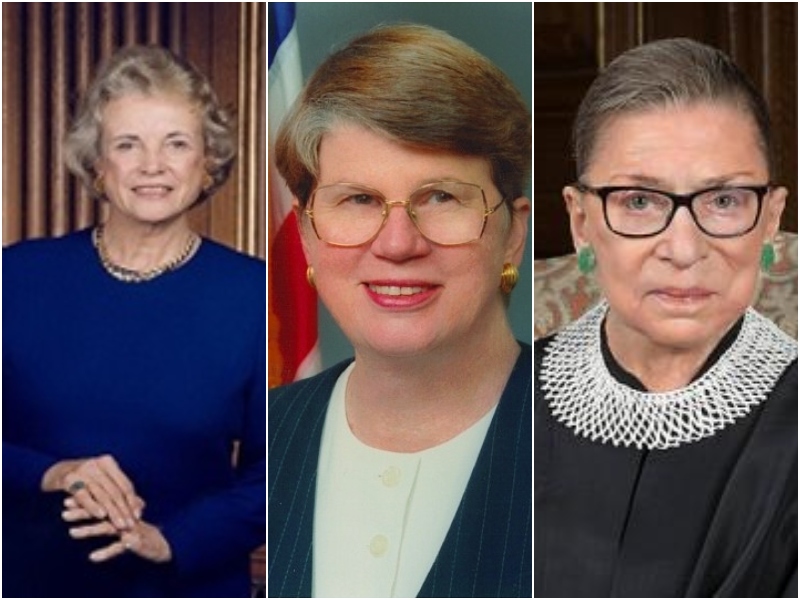In a world where female lawyers make up 38% of the legal workforce, it can be tempting to dwell on the long road ahead in achieving equal footing for women in the legal profession.
While continuing along this road to equity in representation between women and men in law, we must remember that the foundations for this path are already in place.
This road, although by no means complete, was paved by many trailblazing women who fought and endured to show the world just how preposterous it was to think only men could be lawyers.
Listed chronologically, here are ten female lawyers who refused to remain silent about their passion for the law, and who in turn set up a foundation for the countless brilliant rising women lawyers to come.
Margaret Brent: In 1638, Margaret Brent became the first female to practice law in colonial America when she was named the executor of the estate of Lord Calvert, who was the governor of the Maryland Colony. Records indicate Brent’s practice included more than 100 court cases in Maryland and Virginia. Amazingly, there is virtually no record of other female lawyers in America until the mid-1800s; covering a span of over two hundred years.
Myra Bradwell: After founding the “Chicago Legal News” a widely circulated and regarded legal newspaper in 1868, Myra Bradwell was an early pioneer for women practicing law. She wrote a well-received column on “Law Relating to Women,” highlighting hot-button topics such as suffrage, but her most significant contribution came in 1873 when Bradwell appealed to the United States Supreme Court in what many believe to be the first sex discrimination case in American jurisprudence.
Lemma Barkaloo: Lemma Barkaloo was the first woman to apply for admission to Columbia University Law School when her application was rejected in 1868. Two other women applied and were also immediately denied entry. George Templeton Strong of Columbia wrote at the time: “Application from three infatuated young women to the law school. No woman shall degrade herself by practicing law in New York especially if I can save her ‘Women’s Rights Women’ are uncommonly loud and offensive of late. I loathe the lot.”
Lettie Burlingame: In 1886, Lettie Burlingame, a staunch suffragette, started an organization at the University of Michigan called The Equity Club. Originally intended solely for female law students and law alumnae, the organization grew, making it the first professional organization for women lawyers. Burlingame eventually went into private practice and was regarded as a highly-skilled lawyer until her death in 1890.
Lyda Burton Conley: In 1910, Lyda Burton Conley became the first Native American female lawyer in America. Her motivations were pure; she taught herself the law to protect her tribe’s cemetery burial land located in Huron Park Indian Cemetery from being sold. Unfortunately, she lost her case, and the U.S. Supreme Court refused to rehear it; however, Conley had raised enough public support through her efforts that the House of Representatives Indian Affairs committee finally banned desecration of the cemetery in 1912.
Genevieve Rose Cline: Genevieve Rose Cline was the first woman federal judge in America, nominated in 1928 by President Calvin Coolidge to the U.S. Customs Court, where she served for twenty-five years. Cline earned her Bachelor of Laws degree from Baldwin-Wallace College in 1921 and then entered private practice with her brother. In addition to her legal prowess, Cline was an early advocate for consumer protection, women’s rights, and the suffrage movement.
Sarah Tilghman Hughes: Appointed to the U.S. District Court for the Northern District of Texas in 1961 via a recess appointment by John F. Kennedy, Sarah Tilghman Hughes was confirmed the following year by the United States Senate. Her roots in public service ran deep, beginning her career as a police officer helping prostitutes and runaway girls get their lives back on track. While living in a tent by the Potomac River, Hughes attended George Washington University Law School at night. Upon graduation, Hughes entered private practice in Dallas, Texas, and also served as an elected state representative before opting to sit as a state judge from 1935-1961 on the Texas District Court. In the frenetic aftermath of President Kennedy’s assassination, Sarah Tilghman Hughes was called upon to administer the oath of office to Vice-President Lyndon B. Johnson, making her the only woman in U.S. history to swear in a United States President.
Sarah Weddington: Few lawyers can match the professional debut made by Sarah Weddington. The late 1960s were not necessarily an inclusive environment for women lawyers, so she had her work cut out for her. Luckily, she became interested in a case that caught her eye and agreed to take it pro bono. Sarah Weddington was only 26 years old when she became the youngest person ever to argue and win a Supreme Court case. You may have heard of the case; the caption was Roe v. Wade.
Sandra Day O’Connor: After earning her law degree from Stanford in 1952 and serving two terms in the Arizona state senate, Sandra Day O’Connor worked her way through the legal system as an attorney and ultimately a judge. Two years after winning the election to the Arizona Court of Appeals, President Reagan appointed her to the United States Supreme Court in 1981, making her the first woman justice to serve on the Supreme Court in its 191-year history. She served for twenty-four years, during which she established herself as one of the most influential voices on the Court until her retirement in 2006.
Janet Reno: In 1993, Janet Reno became the first female Attorney General of the United States. She went on to serve for both terms of Bill Clinton’s presidency, making her the longest-serving Attorney General in U.S. history. Reno’s tenure was not without controversy; she took full responsibility for the 1993 botched raid of the Branch Davidian complex in Waco, Texas.
Ruth Bader Ginsburg: Ruth Bader Ginsburg was named to the U.S. Supreme Court by President Bill Clinton in 1993, making her the second female justice of the high court. Prior to her appointment to the U.S. Supreme Court, Ginsburg served as a judge for the U.S. Court of Appeals for the District of Columbia for 13 years. She is known for being a strong advocate for gender equality, the rights of workers, and the separation of church and state. Her most notable decisions as a judge include the landmark case United States v. Virginia, ruling that the state-supported military couldn’t refuse women, and Bush v. Gore, which played a major role in the 2000 presidential election.
Starting in her early career as 1 of 8 women in a class of 500 as a law student at Harvard, Ginsburg encountered and withstood gender discrimination. From the classroom to seeking employment after law school, Ginsburg overcame the barriers set forth in the male-dominated legal field showcasing her prevalence and academic strengths.
Ruth Bader Ginsburg died on September 18, 2020, due to complications from metastatic pancreas cancer.
These women comprise just the tip of the iceberg of the countless female lawyers whose contributions to the field of law were invaluable.
While history has done them the disservice of forgetting too many of these sacrifices, the spirit of these gifts is kept alive by the women who choose to pursue the legal profession every day.
The road has been tremendously difficult and excessively long. However, the spirit, resilience, and brilliance of these determined female lawyers have shown countless young women that it is one they are entirely capable of traveling along.

